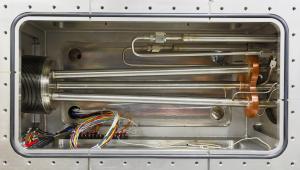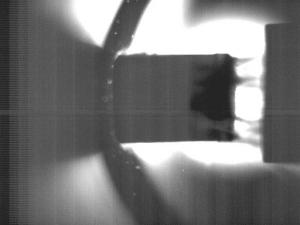Two approaches have been developed to help reduce the effects of plasma disruptions: massive gas injection and shattered pellet injection. Both deliver material to the plasma within milliseconds. By injecting material to the plasma, ITER operators will be able to manage plasma energy in a way that lessens thermal loads and mechanical stresses on the plasma-facing components of the machine. The injected material can also inhibit the formation of runaway electrons, which occur when electrons are accelerated by the electric field in the plasma during a disruption.
The gas will be neon, argon, deuterium or helium; the pellets will typically be composed of neon with a deuterium outer layer. The pellets are shattered against a plate as they enter the vacuum vessel in order to better disperse the material into the plasma.
First-of-a-kind achievements have already emerged from the US ITER and ORNL team, including the largest cryogenic frozen hydrogen pellet ever formed and fired by a pellet injector "gun" (25 mm in diameter) and a novel three-barrel pellet injector for delivering the pellets to the plasma. The pellet guns use a gas propellant to fire pellets at 300 metres per second, or about 670 miles per hour.
The team is now at work making even larger cryogenic pellets—up to 41 mm in diameter—that can still maintain the necessary speed to deliver material to the plasma within milliseconds of a disruption.



